Reservoir ruins sale offers cliff views, odd history
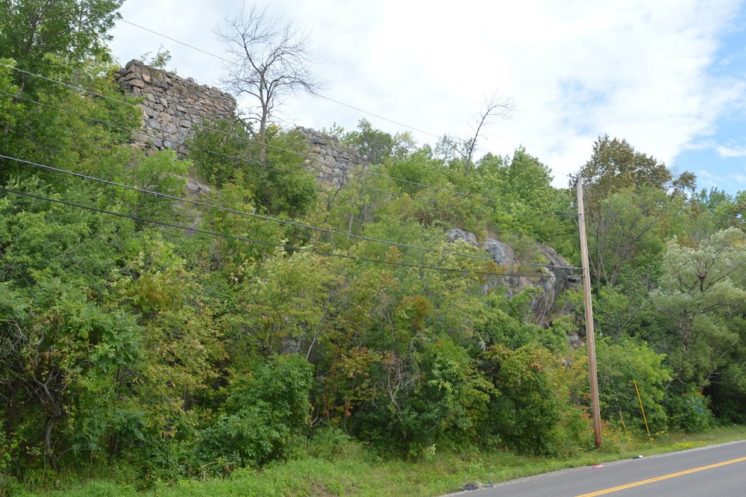
The ruins of the 1884 Duluth Gas and Water Company reservoir can be seen from West First Street, just west of Point of Rocks. (Photos by Mark Nicklawske)
The sprawling and mysterious stand of stone and brick ruins that occupies perhaps the best clifftop view over Duluth’s harbor is for sale.
The site of the first-ever city water reservoir — which later became known as Fort Corcoran — was put up for sale this spring and will be relisted next month. A group of property owners based in Buffalo, Minn., are asking $240,000 for the 1.7-acre parcel at 1001 W. First St.
Located in the Observation Hill section of what is considered the Central Hillside neighborhood, between Downtown Duluth and Lincoln Park, the property appears to have sat abandoned and undeveloped for more than 100 years. Still, its stunning views and hidden location attract explorers, partiers, vagrants and occasional exhibitionists.
Remax Results Broker Associate Kevin Lomen is selling the property for the ownership group. He led Perfect Duluth Day on a hike recently down an unofficial path through overgrown brush and fallen trees to the edge of a 50-foot cliff.
“Not a bad view,” said Lomen, standing next to the stone ruins overlooking Duluth harbor and its iconic Aerial Lift Bridge. “From First Street we’re standing on a rock cliff.”
Loman said the property is large enough to develop two condominiums totaling 24 to 32 units. The site is connected to city utilities and accessible from the West Second Street dead end. He said the ruins of the reservoir — also known as a cistern — could be reused for parking below a three-story building with eight units per floor. A second smaller building could be constructed on property to the east.
“There aren’t many better views of Park Point, everything in the harbor,” he said. “If you situated the building right you’re going to get a view for all 24 units.”
Loman said the current owners purchased the property 15 years ago intending to build on the site. A project never materialized.
“They bought it from a friend who got too busy with his business and didn’t have time to develop it either,” he said. “I think with that view it’s something. Where are you going to find a chunk like this in the middle of the city, close to downtown?”
According to the Duluth history website Zenith City Online, the privately-owned Duluth Gas and Water Company constructed the reservoir over a natural spring in 1884. It served as a water source for residents until 1898 when the city constructed its own public water system drawing from Lake Superior at the Lakewood pumping station.
At some point, its original flat roof was destroyed by fire.
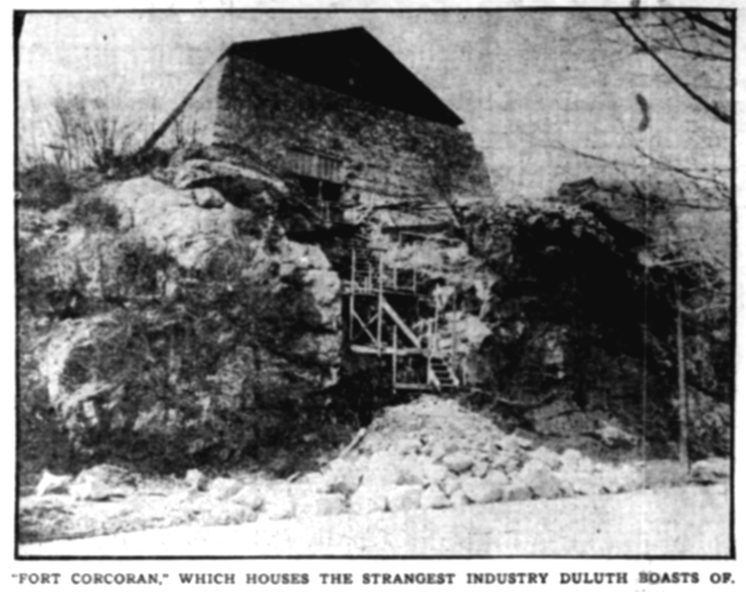
A photo of “Fort Corcoran” from the May 7, 1910 Duluth Evening Herald. (Image: Zenith City Press).
In 1909, an animal enthusiast named J.M. Corcoran purchased the property, added a pitched roof and planned to turn the structure into a “miniature Noah’s Ark.” Reports in newspapers at the time said Corcoran planned to breed dogs, cats and “many other things that purr, bark, scratch or bite.”
Zenith City Online research shows Corcoran also had grand plans to use a second floor as a roller rink and add a third floor to create “thirty-two commodius rooms for lodgers.” The plans never took shape but newspaper advertisements show Corcoran sold birds and other animals for at least three years. No records of a business at the address exist after 1912.
Longtime area resident Barry LeDoux, who lives on West Second Street, said the neighborhood keeps a close eye on the property. He said vagrants occasionally set up camp in the wooded area around the reservoir and police have been called to address drug problems.
“We’ve had several issues with homeless people here,” he said. “My heart goes out to them every time — but they leave a complete mess and it’s not a safe place to live.”
Visitors often stop at the dead end and hike back into the reservoir, LeDoux said. He finds evidence of parties and sees photographers passing through, including a woman who poses annually for pictures among the ruins au naturel.
The reservoir is located in an area that has had many names including Little Italy, Skunk Hollow and Shantytown.
LeDoux said he has explored the area and discovered former “shanty” foundations and what appears to be an old grotto. “If it got cleaned up it would be a really beautiful place,” said LeDoux. “It would make a great park.”
Recommended Links:
Leave a Comment
Only registered members can post a comment , Login / Register Here


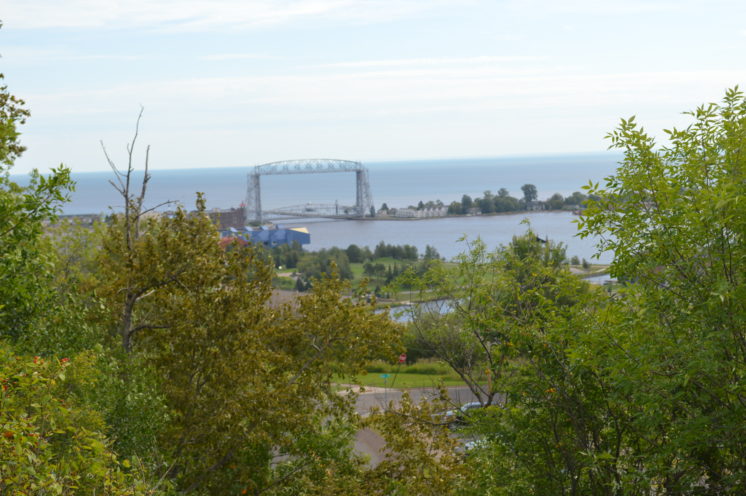

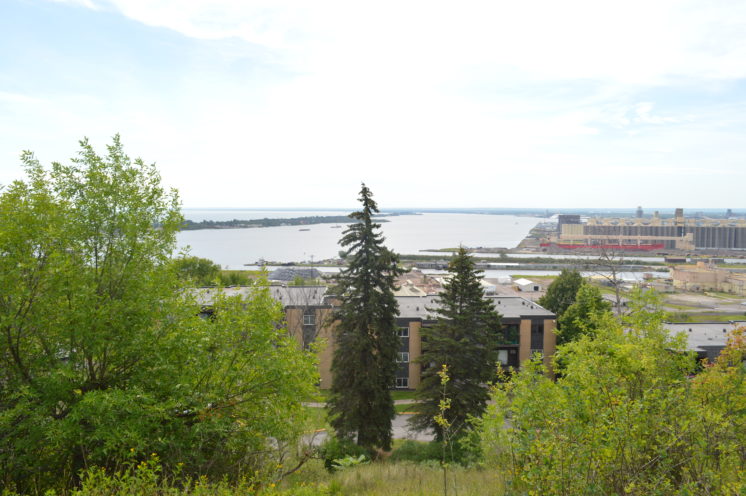



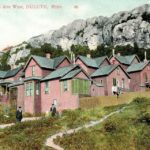








No Comments